A Few Altadena Artists
by Mark Goldschmidt
Not so long ago Altadena, a leafy backwater up against the mountains with cheap and charming housing, attracted quite a number of artists. A life in art is not easy, it requires fierce inner drive and discipline and a passion to create. It’s hard work, and it doesn’t generally pay well, especially during the first two or three decades.
Following is a brief introduction to just a few of the working artists in our community. Apologies to the many who have been omitted, some with international reputations, this is merely a representative sample. There is little room to reproduce the art in this publication, so readers are urged to visit the artists’ websites and take a good long look. You will be surprised and rewarded, not just by the art, but also by what they have to say,

Sculpture by Douglas Tharlson, dramatizing an ongoing argument between Zorthian and Richard Feynman: “who appreciates beauty more, the scientist or the artist?”
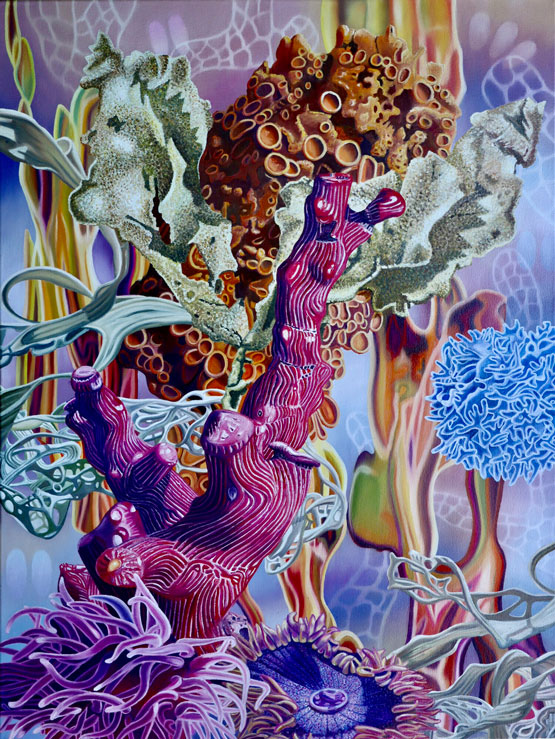
Gary Brewer
Gary Brewer
Gary Brewer paints luminous canvases, biologically inspired. Some are figurative, like his large erotic closeups of orchids, others more abstract, but all are finely modeled in three dimensions and inspired by life forms. He has recently began working in clay to create forms that recall sea creatures. • garybrewerart.com
Carolie Parker
is both a poet and visual artist, having earned degrees in comparative literature and studio art. She has exhibited extensively around Southern California, published in a number of poetry periodicals, and curates shows for artist-owned galleries in LA. carolieparker.com
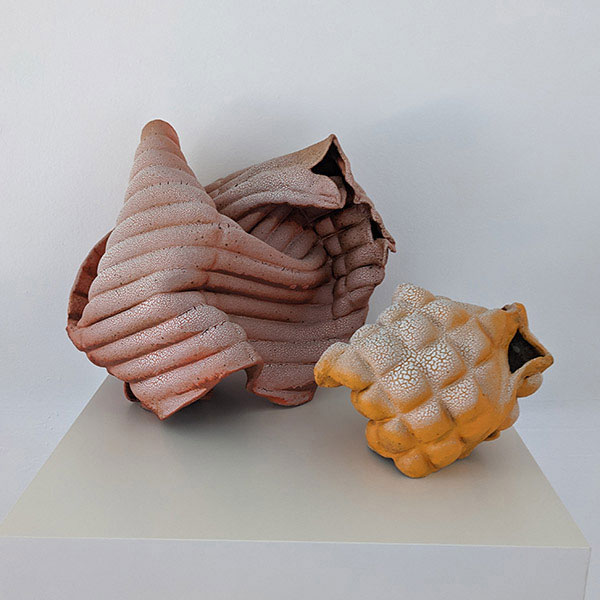
Carolie Parker
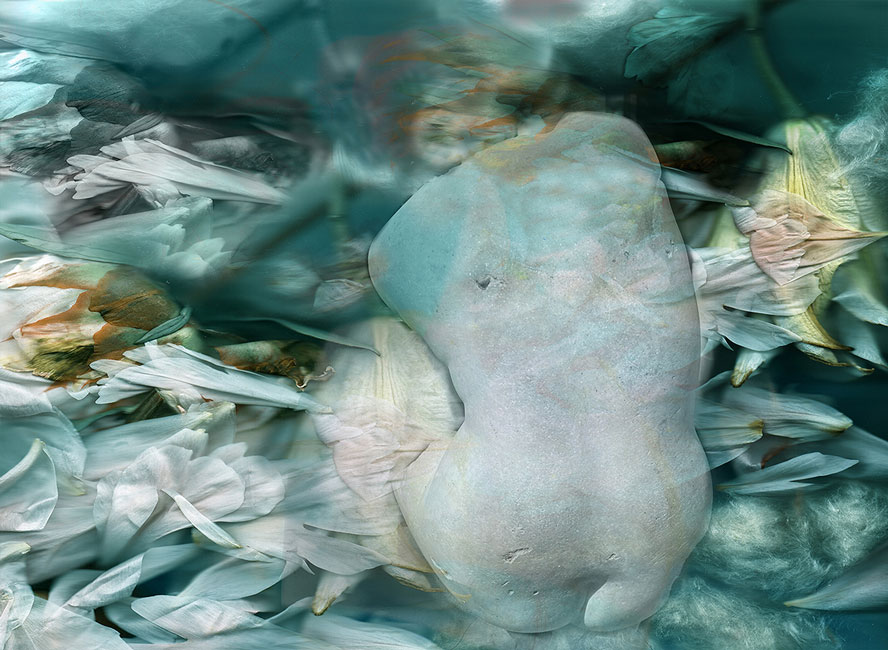
Aline Mare
Aline Mare
Aline Mare has her roots in New York where she produced films, multi-media events, and performances, and where she received numerous grants and residencies. Her recent paintings are idea-driven. “Dam dams” is a series that focuses on dismantling of obsolete dams, while another, “He, She, They” examines “paradoxes in the heart of notions of masculinity.” And yet the paintings in soft layered color generate an emotional rather than an intellectual response.
• alinemare.com, alinemare.com
“I interpret our world through the lens of science and art to shed light on the relationship between the environment and human nature. I work with a hybrid form of painting, photography, and installation, synthesizing my aesthetic sensibilities with a deep interest in the natural cycles of the earth.”
Miki Yokoyam
Abstract shapes, intricate patterns, animate images of fish, flowers, butterflies, mountains, suns and stars intertwined with sinuous vining lines fill Miki Yokoyama’s joyful paintings.
Miki prepares her canvases with dyes to create a mottled background of deep colors that she paints over with lighter oils. Colors are vibrant, her lines are smooth and sensuous, and the overlay on dark backgrounds creates a sense of cosmic depth. You can lose yourself into her large paintings. • mikiyokoyama.com
“I realize I am a tiny thing in the world, only here for just an instant, yet I am a part of all creation, the whole pulsating enormity of life. It will all collapse some day, but in the moment it is exciting and beautiful and terrible, happy and sad. I paint every day to express my amazement at the swirling, ever-morphing fabric of existence. I want people to see what I see.”
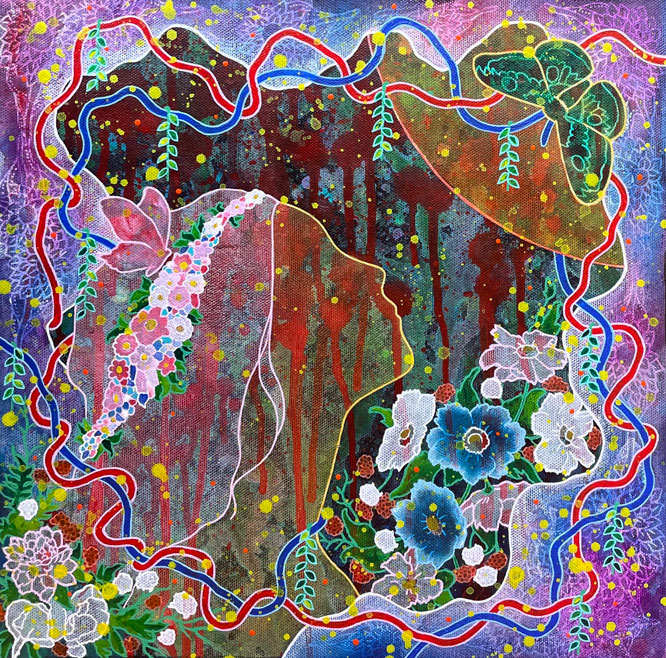
Miki Yokoyam
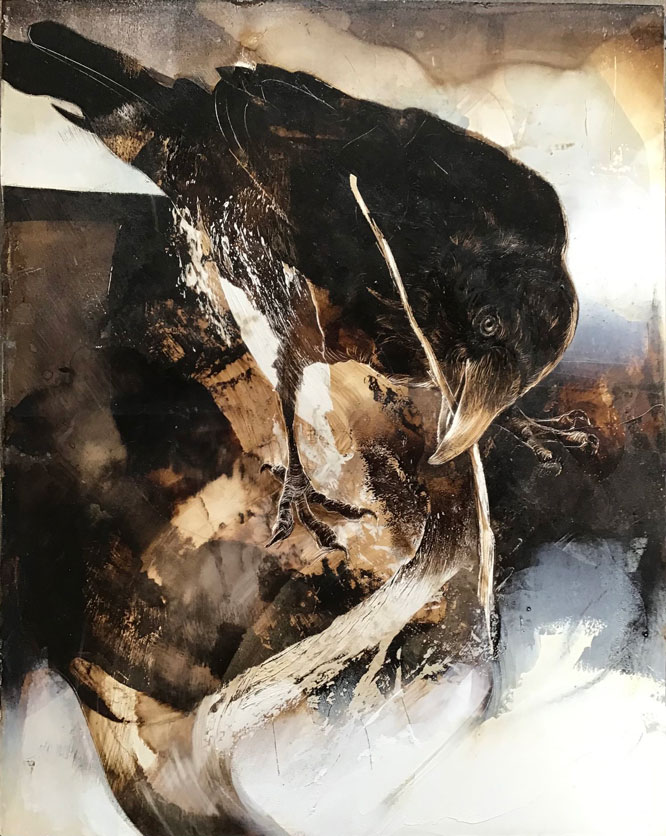
James Griffith
James Griffith
Fifteen years ago, James Griffith’s paintings were not attracting buyers, so he decided to explore a new medium (oil paint has gotten so expensive). He drove to the La Brea Tar Pits, asked if he could have a bucket of tar. They laughed “How much you want? We can’t get rid of the stuff.” That started him on his Tar Paintings. He found inspiration in the crude gritty brown petroleum, the remains of ancient micro-organisms from the Miocene. He feels a connection across the aeons at the dawn of life when he drops some goo on his canvas, swirls it around, and finds shapes that suggest images, mostly of animals. He etches this vision into the drying tar — new life superimposed on the ancient. James and his wife, and artist Sue Dadd, are probably most well known in Altadena for the Folly Bowl, a magical private amphitheater they generously share with the community. It is a work of art, a garden, a music venue, and it shores up the steep slope below their home. jamesgriffithpainting.com
“I have abandoned the traditional oils of my earlier paintings and replaced them with tar. Tar is primordial goo made from extinct organisms over geological periods of time. Depicting living animals with tar suggests transformative cycles of evolution and extinction. Tar also reminds us of our own potential extinction caused by our need to burn petrochemicals.”
Patty Wickman
Painter Patty Wickman works in a studio adjacent to Tim Hawkinson in their Altadena back yard (they are married). She teaches at UCLA and is a highly respected painter with a long track record. Currently she is painting scenes of events meaningful to her and her family. As with so many artists, her style and subject matter have changed over the years. Very interesting pattywickman.com

Patty Wickman
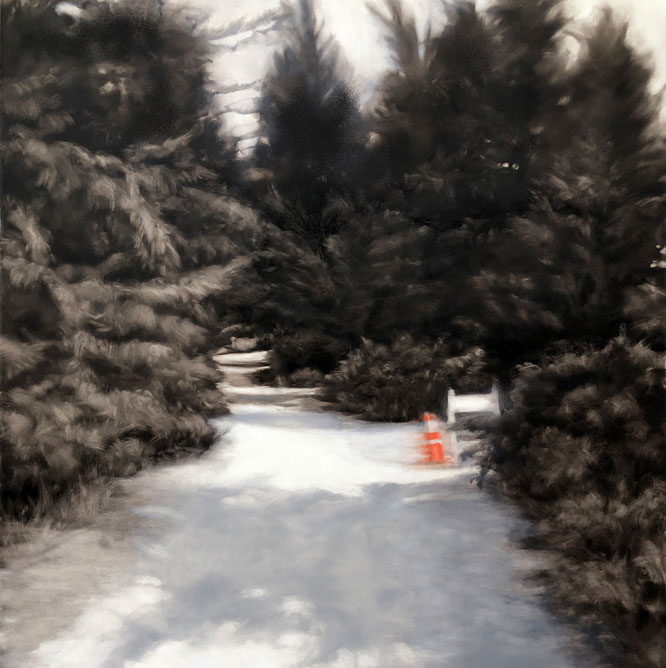
Lynne McDaniel
Lynne McDaniel
focuses on land and what our civilization does to it. Her landscape paintings — hazy shapes in muted sepias and rich grays, often with a small orange accent — are quiet, yet powerful. It is all about the land; people rarely appear in her work. • lynnemcdaniel.com
“My work is about the gradual metamorphosis of the landscape as well as the more immediate impact of a human presence. I use geography — features of the landscape — as the context to explore these changes. I am seeking to express not merely the reality of the landscape I see, but the emotional connection to the space in my imagination.”
Donna Barnes Roberts
Donna Barnes Roberts loves flowers. Her watercolors are exquisite, they show what can be done with watercolor by a true master of the medium. Technically perfect, shading is subtle and nuanced. Somehow, in her portraits of flowers, you can see that she loves each and every one. Donna has taught watercolor for years in Altadena and is known to be quite demanding, but if you want to do it right, she’s the teacher for you. • lynnemcdaniel.com
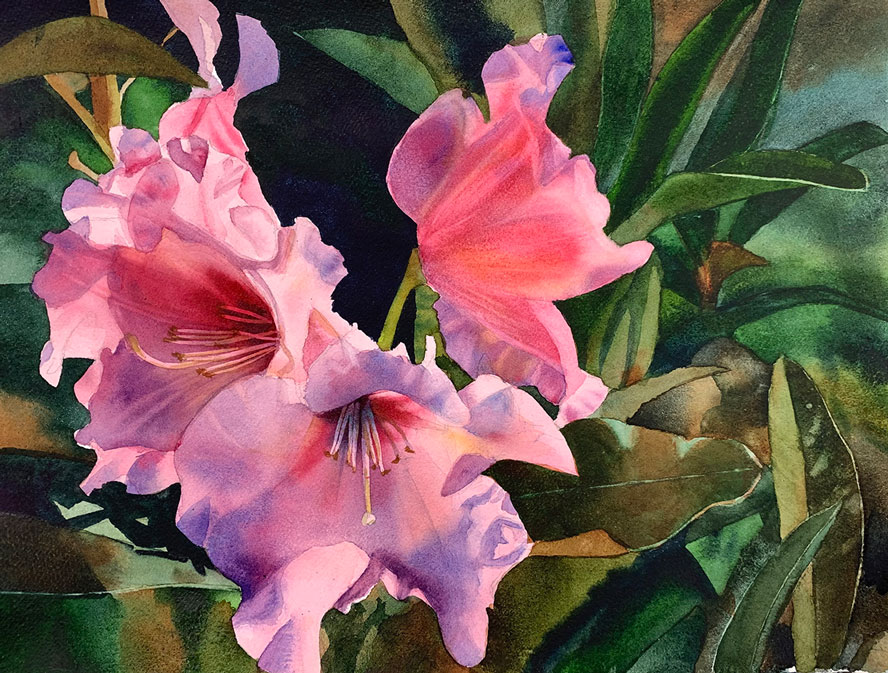
Donna Barnes Roberts
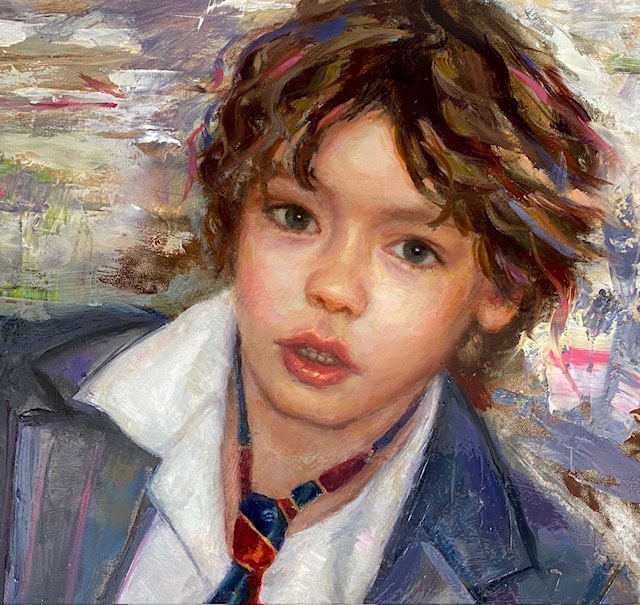
Sylvana Lankshear
Sylvana Lankshear
British expat Sylvana Lankshear came to Los Angeles in her twenties for a successful career in the fashion industry. She quit that, and now she paints in her beautiful studio up the hill. Her impressionistic lands-and-city-scapes are outstanding. She still does those, but now she is concentrating on portraiture. Her likenesses are keen, they capture character and are remarkably alive. • sylvanalankshear.com
“My life long journey as an artist continues with endless fascination and inspiration in representational oil painting and charcoal drawings, capturing ‘Nature and Humanity’.
I work professionally on portrait commissions, as well as enjoying each day here in my home studio in Altadena, working on a myriad of painting projects.”
Philip Vaughn
Philip Vaughn, an expat Brit, raised in France, educated in England, gave up Cambridge architecture for art school, became a sculptor and teacher. In 1977 he built a sailboat, and sailed it across the Atlantic, ending up in Florida. There he hired on to Disney Imagineering, a job that eventually brought him to California and Altadena. Fascinated with the way colors interact, he paints and sculpts kinetic neon light sculptures. Watch them morph on video loops at philipvaughan.net
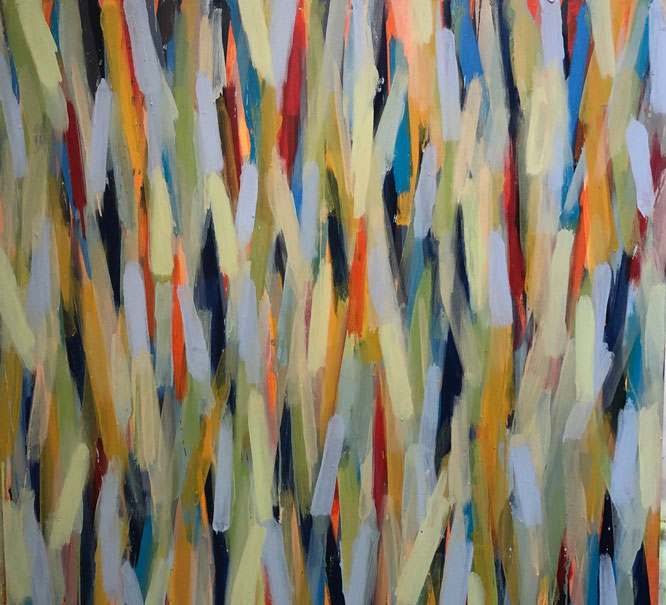
Philip Vaughn
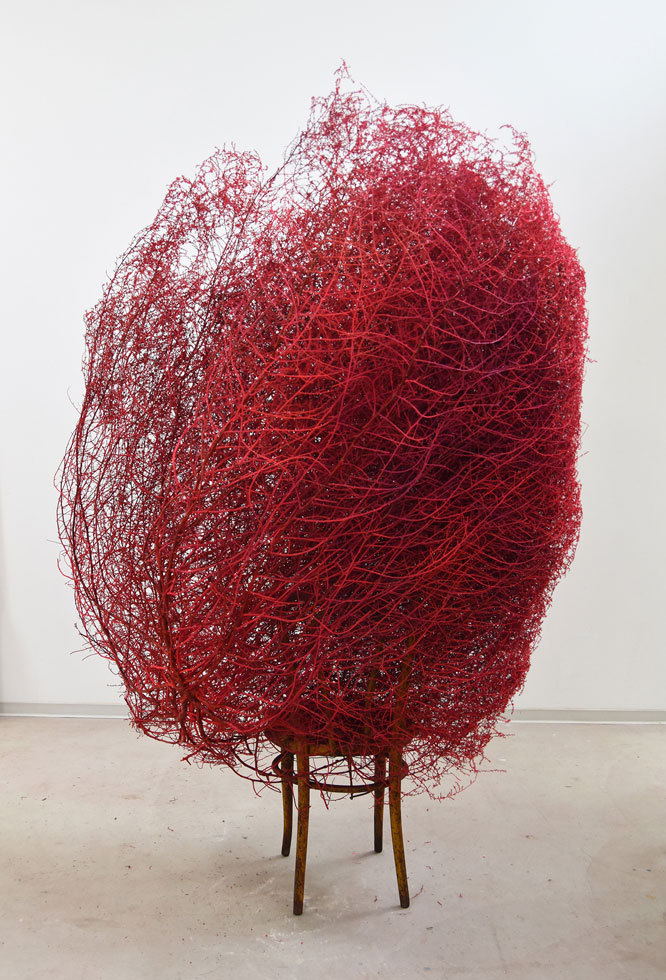
Coleen Sterritt
Coleen Sterritt
Coleen Sterritt’s sculptures are assemblages of natural materials and the detritus of our civilization that she puts together in intuitive ways. Her graphic works on paper portray abstract biomorphic forms.in color. coleensterritt.com
“I am interested in the poetics of ordinary objects and materials and what they might reveal about our human experience. My hybrid sculpture evokes the interplay of nature, culture, and lived experience.”
Eric Zammitt
Eric Zammitt paintings are made from tens of thousands of solid bits of colored acrylic plastic, fused together, sanded and polished. He assembles colors in rhythmic patterns that shift and blend, recalling music in the way they conjure emotions — color music. Eric has a great video of his process at ericzammitt.com.

Eric Zammitt
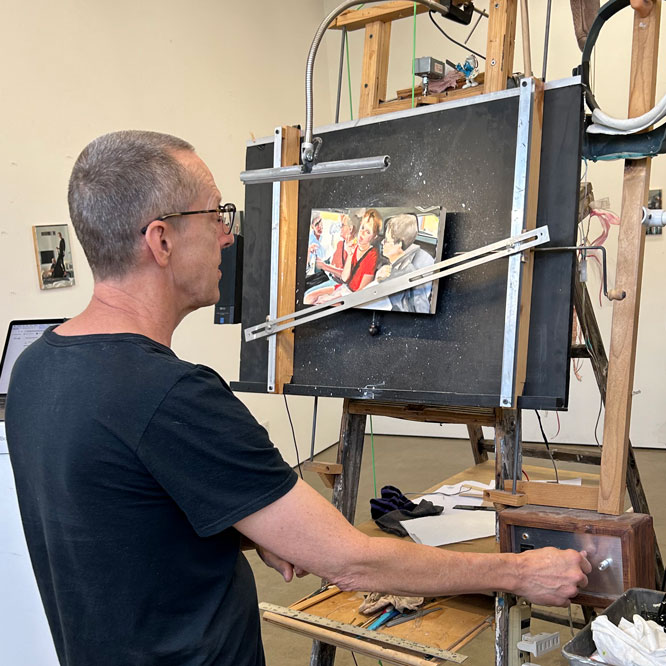
Tim Hawkinson
Tim Hawkinson
It seems like Tim Hawkinson can make anything, but his manual skill is nothing compared to his fantastical imagination. He crafts odd and beautiful stringed musical instruments, intricate small sculptures and enormous ones, he is a gifted realist painter, and much more. “Überorgan” consisted of thirteen bus-sized inflated bags made from plastic sheeting: one for each the twelve tones in the musical scale and one udder-shaped bag to feed air to the other twelve through tubular ducts. Operated by an ingenious player-piano-type mechanism it pulsed and swayed and filled the Getty Rotunda with unearthly sounds. Awe inspiring and whimsical, it cannot be adequately described in words; watch the video —
google Uberorgan at the Getty.
Currently Hawkinson is painting small photorealistic oils from snapshots of him and his family on a cunning easel based on an old wooden ladder. Fully mechanized, a servo motor raises, lowers and tilts his canvas to the perfect angle and height. A 21-foot-tall bear sculpture constructed of boulders is just one more remarkable creation to spring from his brain. The short video is mind-blowing: • hawkinson.html
Sabine Meyer zu Reckendorf
Another local artist with outstanding mechanical skills, a fertile imagination, and a vigorous work ethic is Sabine Meyer zu Reckendorf. She crafts cunning little sculptures from household and industrial materials, many of them are animated with tiny motors. Her most magnificent artwork is her home and garden, on to which she has lavished her skills, imagination, and untold hours of hard work to transform it into a whimsical wonderland of sculpture, brightly colored tile, and lush plants. Sabine works in many materials, and designs lighting and furniture; her craftsmanship is impeccable, belying her industrial training. Her website features her fantastical sculptures. Her home is featured in the Artful Homes Tour on September 14th. • sabinemeyerzureckendorf.com
“My work is heavily informed by my education as a designer in Muenster, Germany. I brought those design and fabrication skills back home to freedom-loving California and infused German quality engineering with fun and color. I am influenced by Niki de St. Phalle, Jean Tinguely and others in my use of motors, bold lines and bright colors.”

Sabine Meyer zu Reckendorf
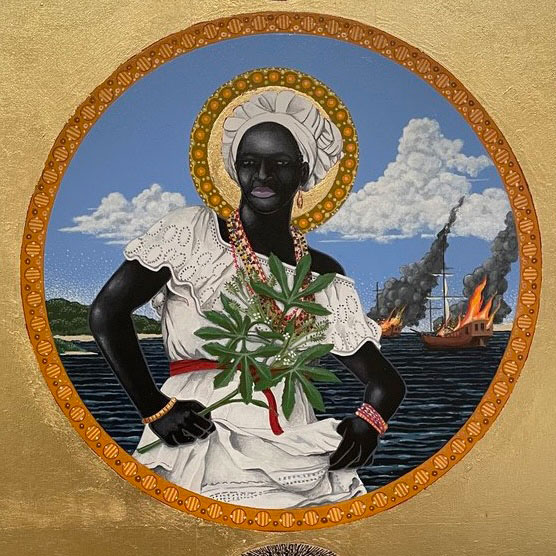
Mark Steven Greenfield
Mark Steven Greenfield
Currently Mark Steven Greenfield is painting icons, jewel-like paintings on gilded panels, honoring members of the Black diaspora, the men and women who triumphed in some way over slavery and racism. They tell stories of, in his words, “ black saints, folk saints and pseudo-saints, and a few scoundrels.” Few records were kept of Black accomplishments and victories through history. If there are no pictures to go on. Mark channels the characters, then renders them with visual symbols of their lives to memorialize their story.
Earlier work dealt with Jim Crow imagery, cartoons and minstrel shows. Mark says “it came out of “the need to take the power away from images used to promote African American stereotypes. With the icons I’ve come around to looking at the good side, all the accomplishments and the bravery.” • markstevengreenfield.com
Paul McCarthy
Undoubtedly the most internationally famous artist in Altadena would be Paul McCarthy. His multidisciplinary, frequently scatological works often include self-abasement of the most shocking sorts. He can be quite funny, but just what he’s trying to say is hard to discern. It seems he holds Western civilization in supreme contempt, there is anger along with the mockery. Hauser Wirth, his gallery, writes “Paul McCarthy is widely considered to be one of the most influential and groundbreaking contemporary American artists… he first established a multi-faceted artistic practice, which sought to break the limitations of painting by using unorthodox materials such as bodily fluid and food.” He gained fame when a giant brown inflatable called “Complex Shit” exhibited at the Paul Klee Centre in Berne, was hoisted by a gust of wind, took down some power lines and damaged a nearby children’s home. Many regard his art highly, and it does make an impression. • paul-maccarthy
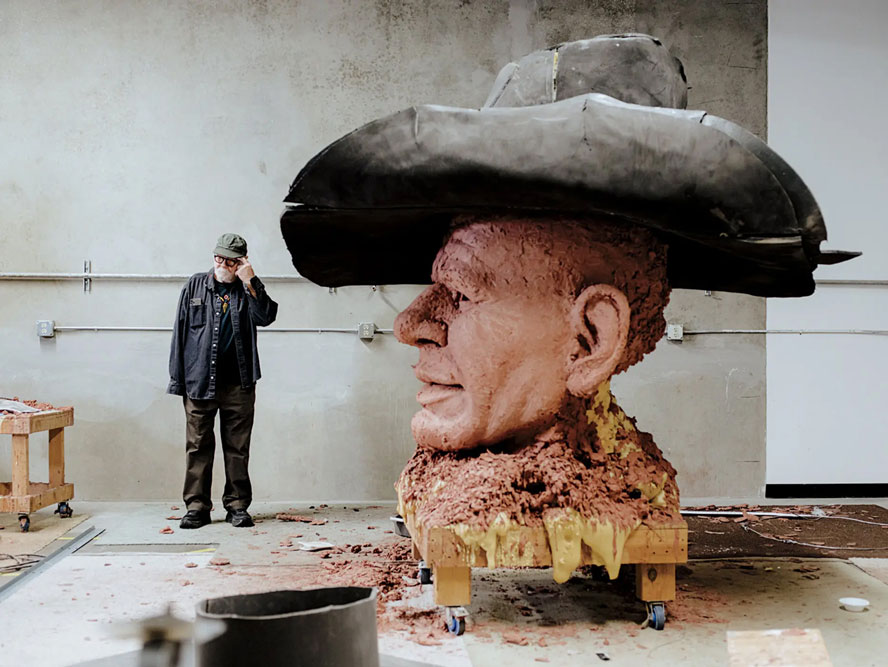
Paul McCarthy with in-progress clay bust of actor Charles Bronson. 2021
• Photo: Joyce Kim
